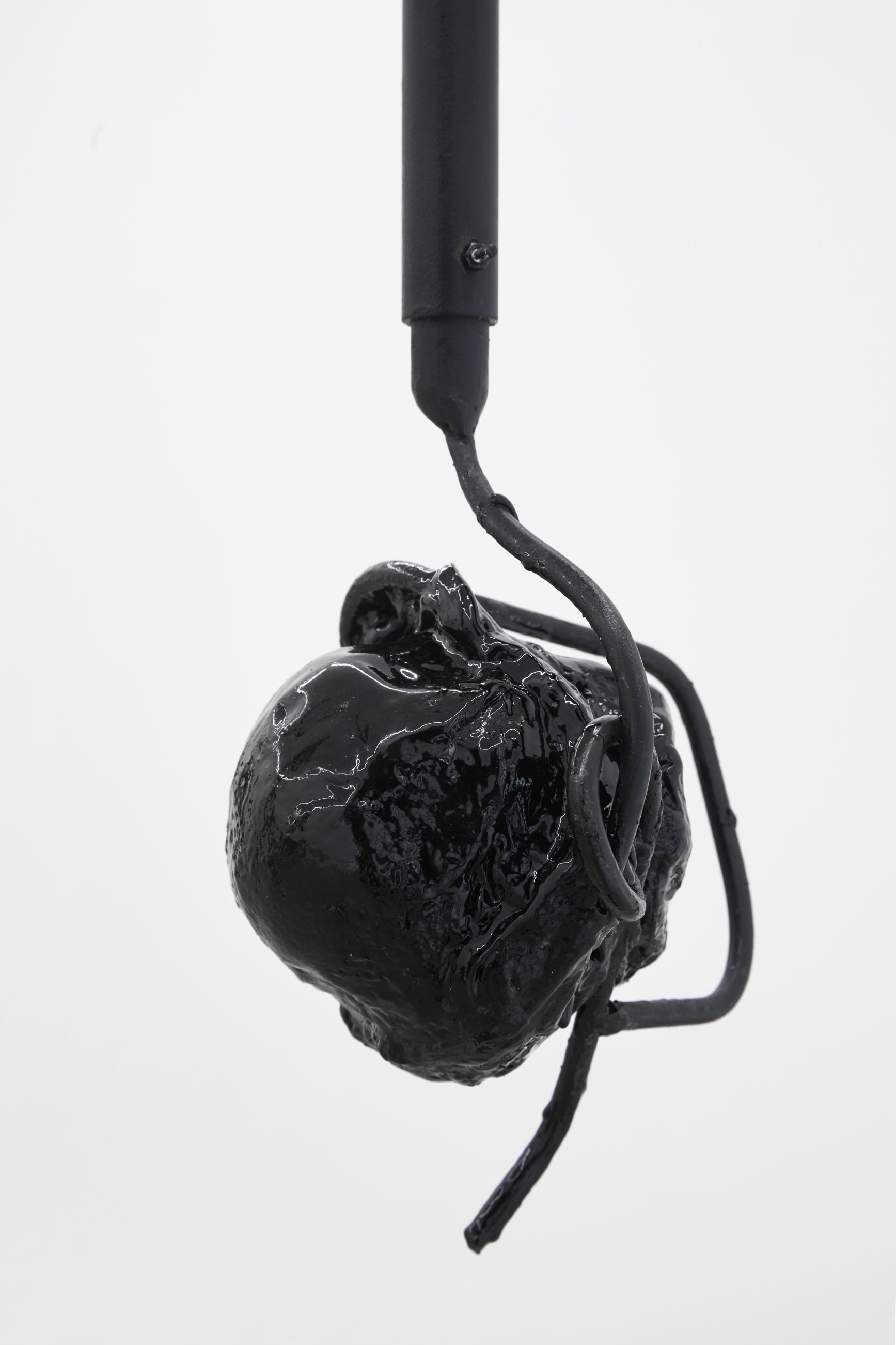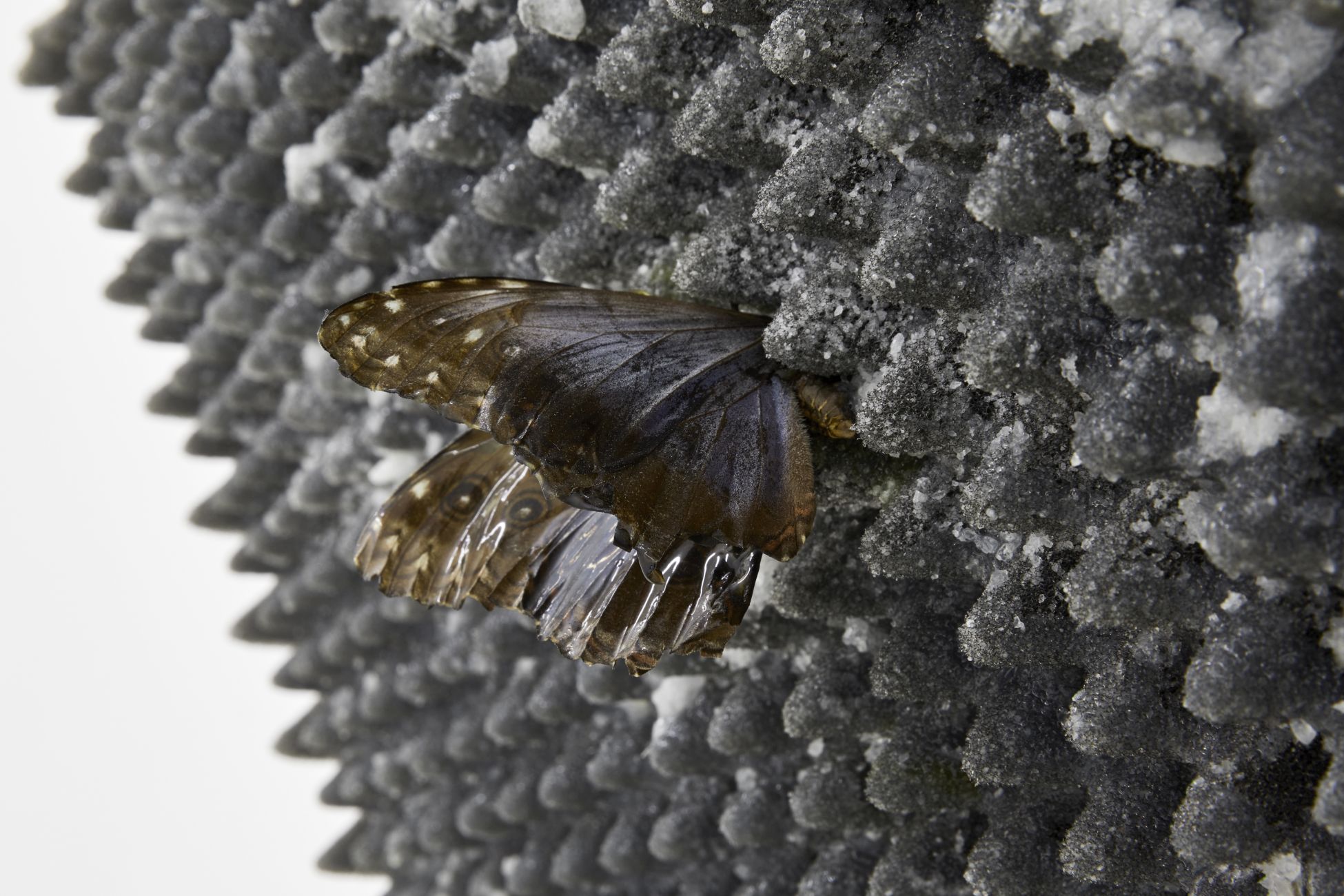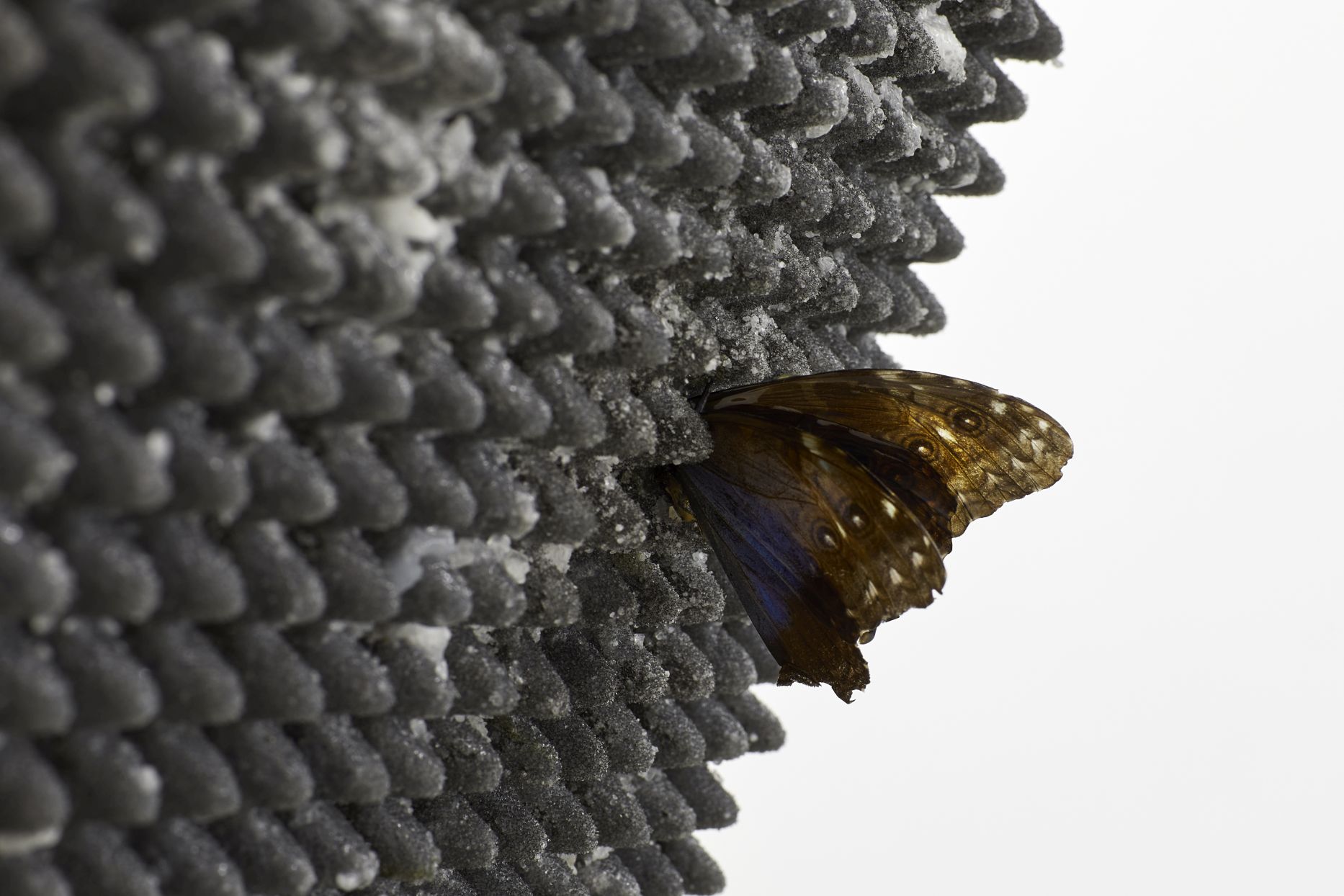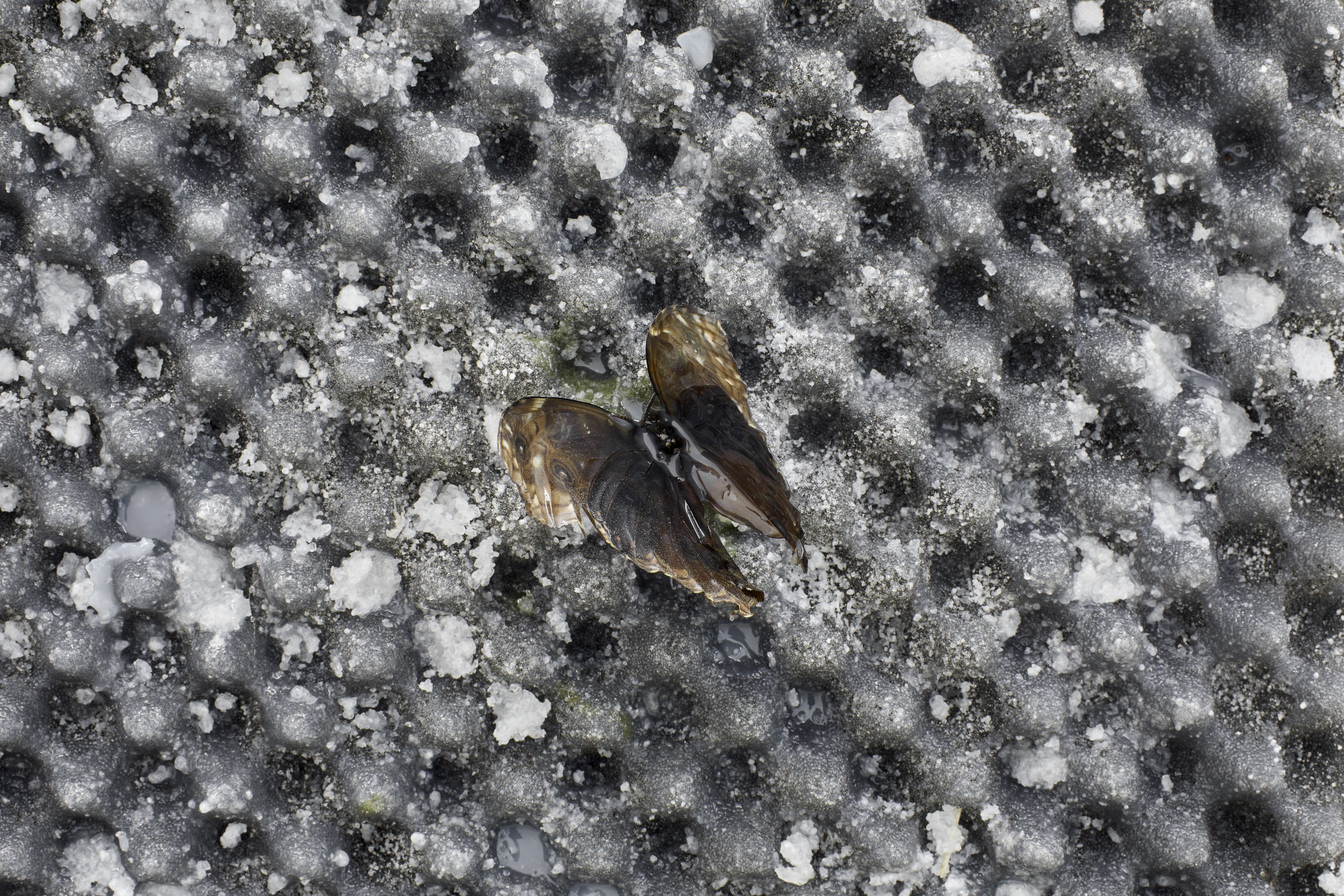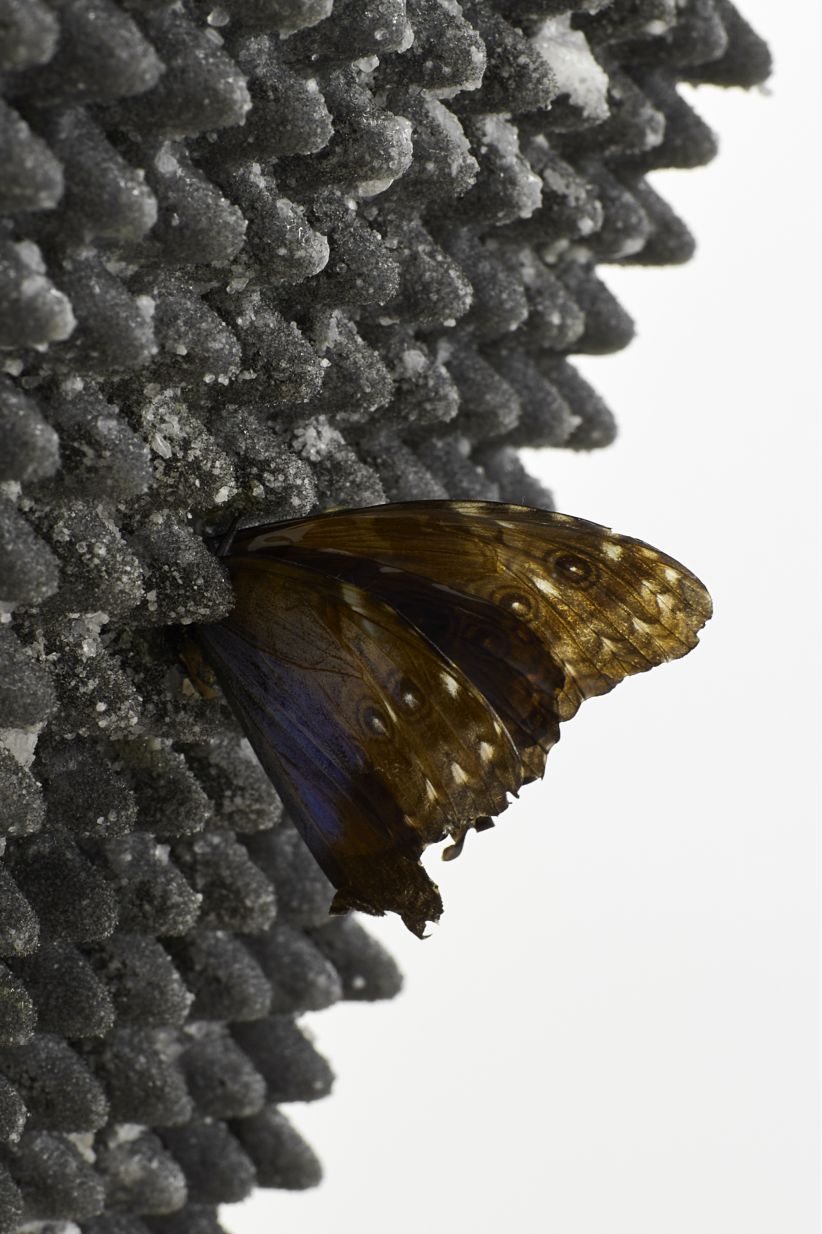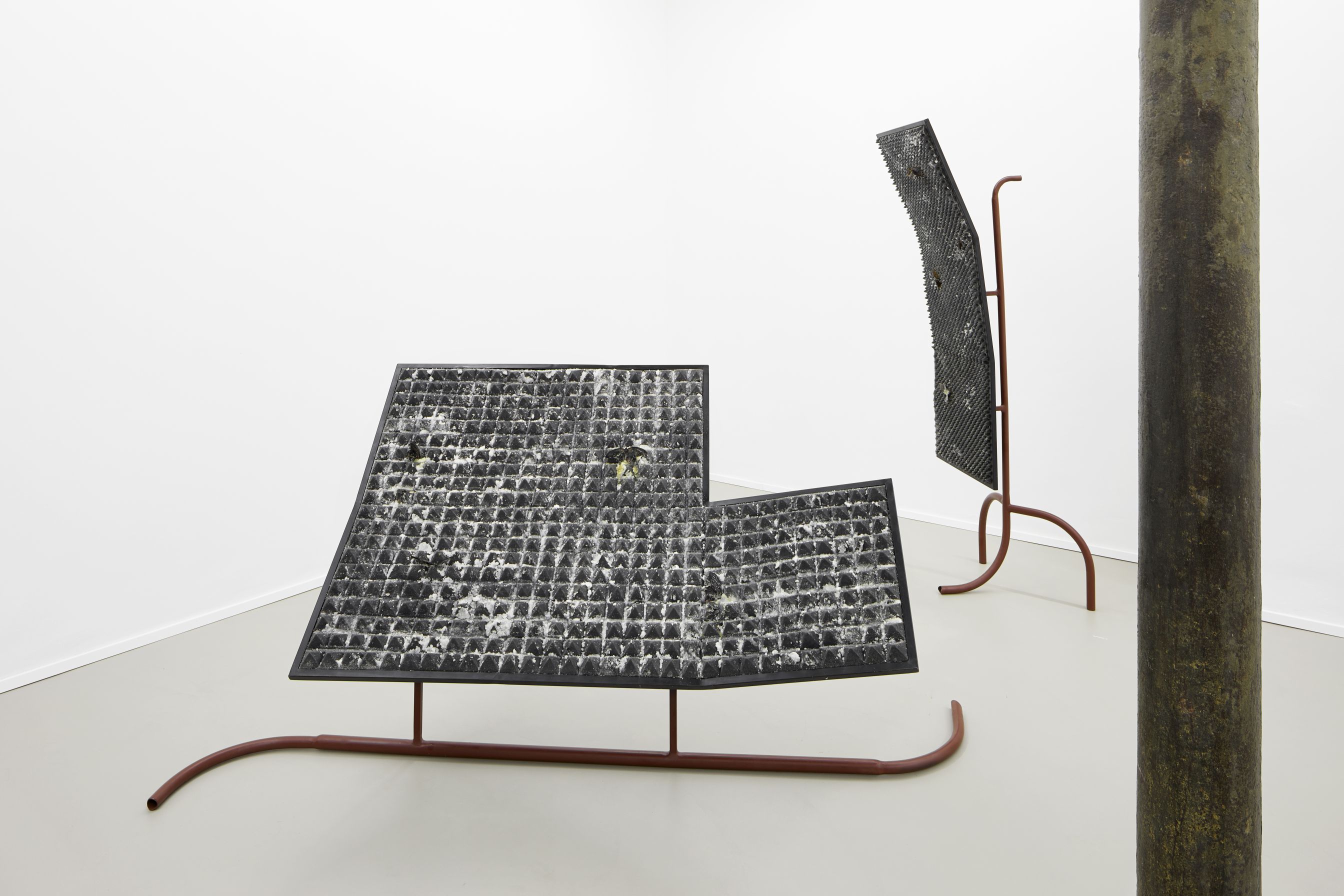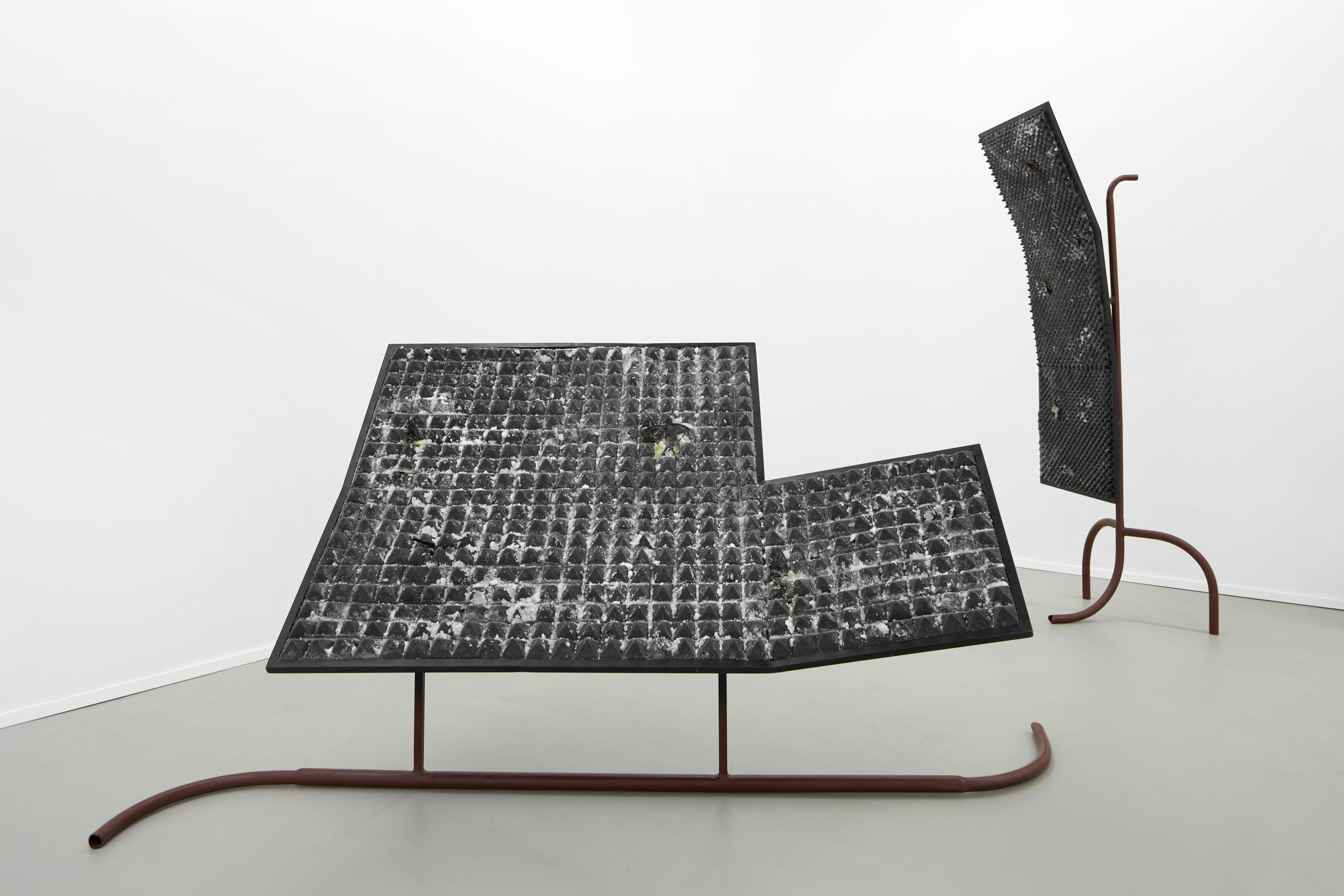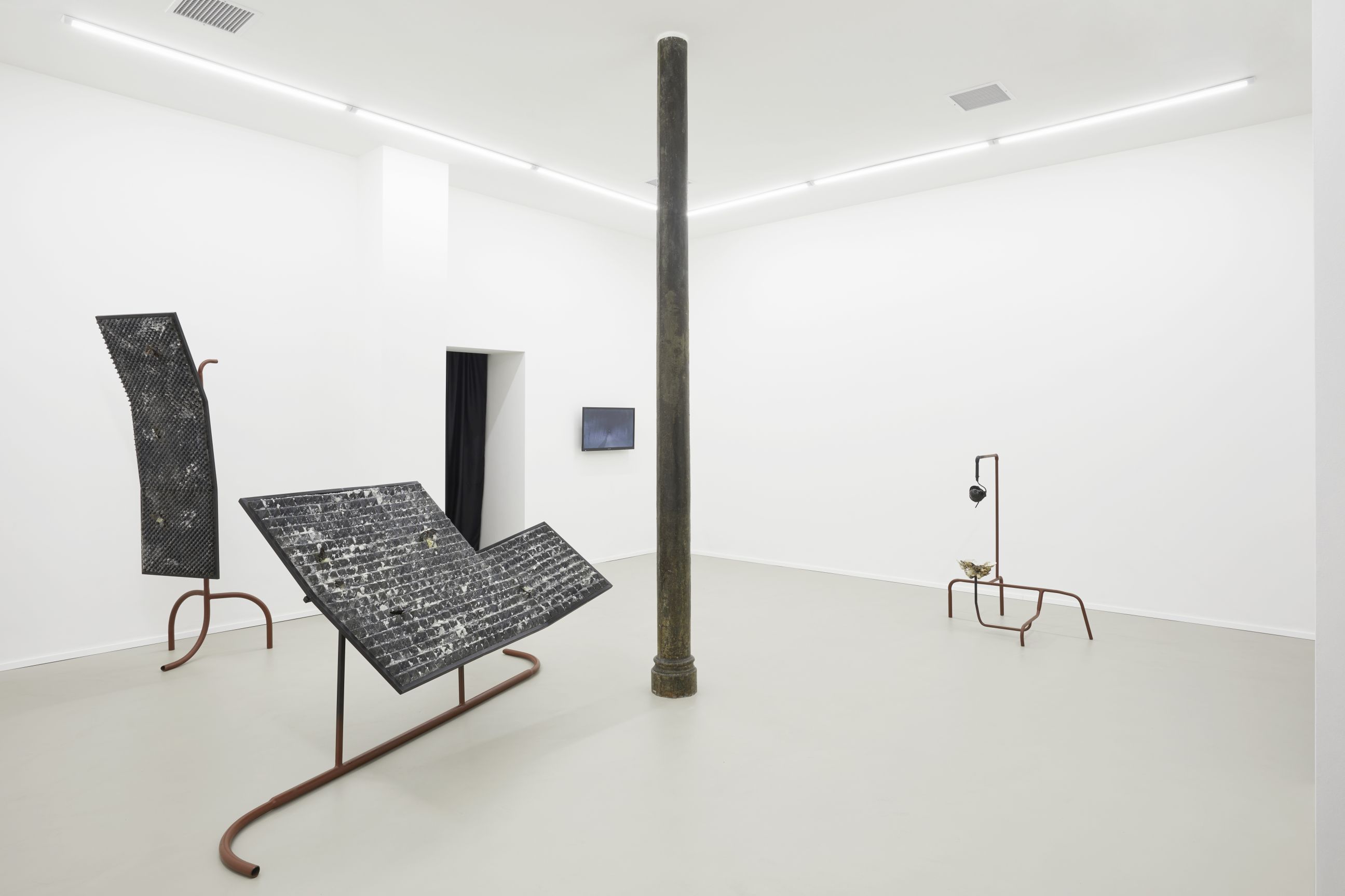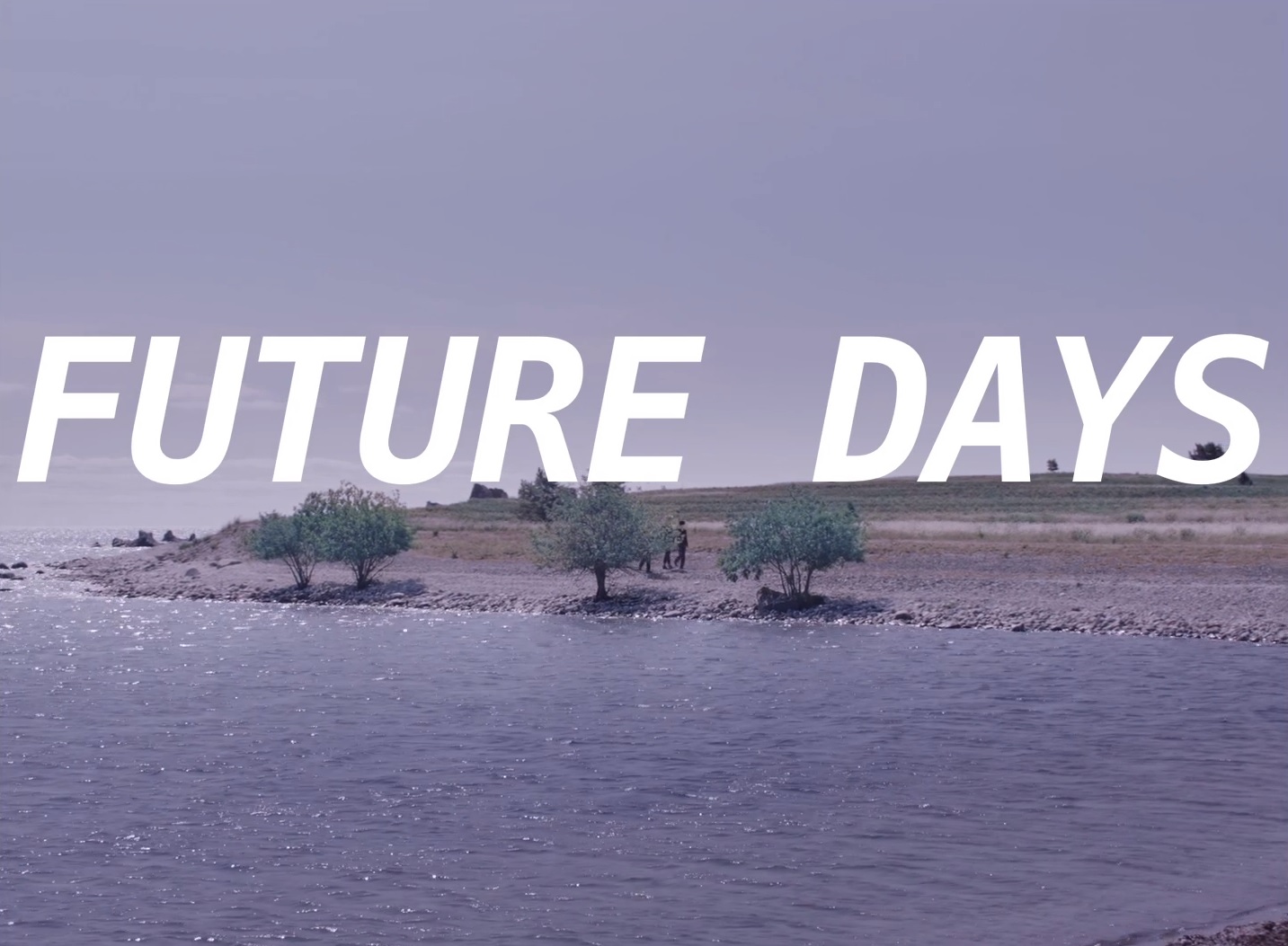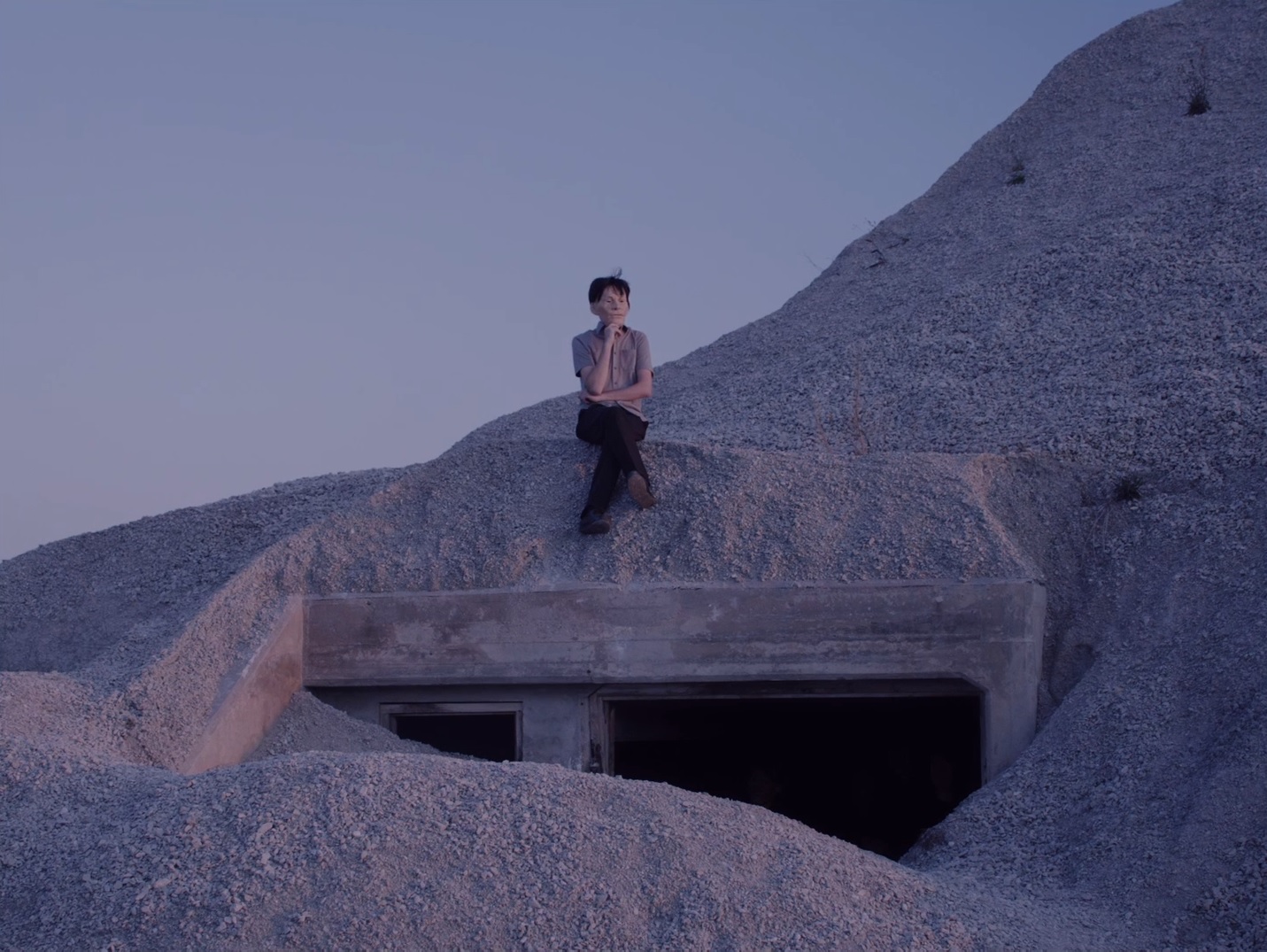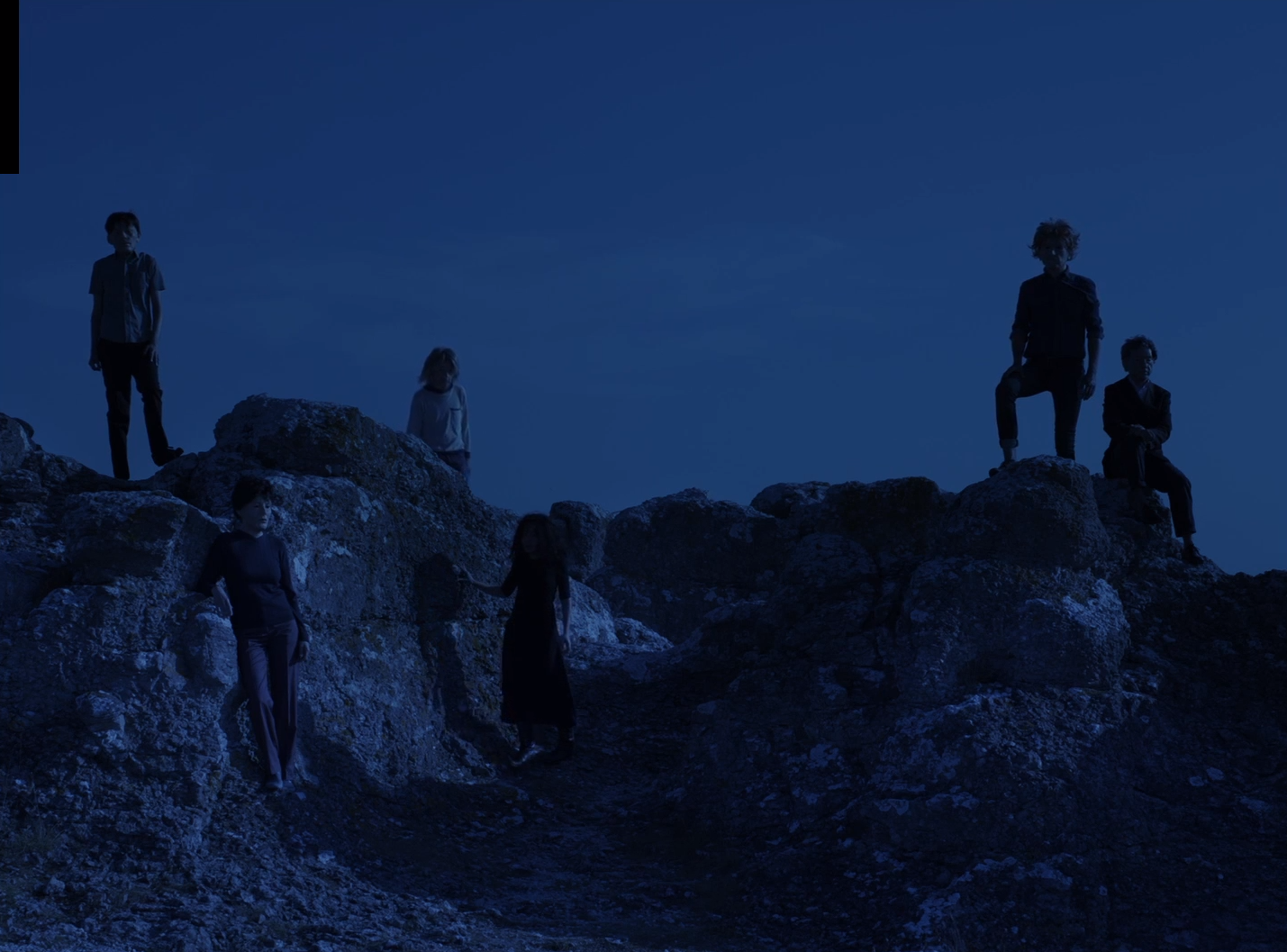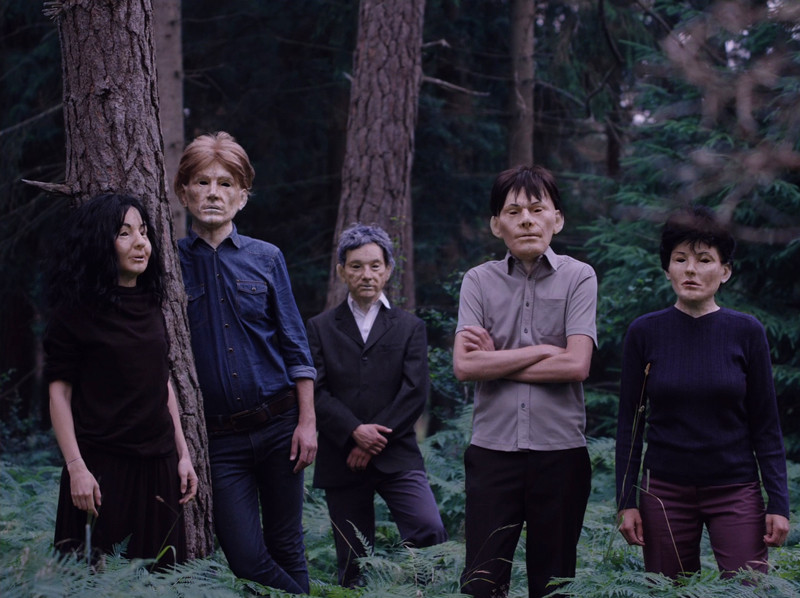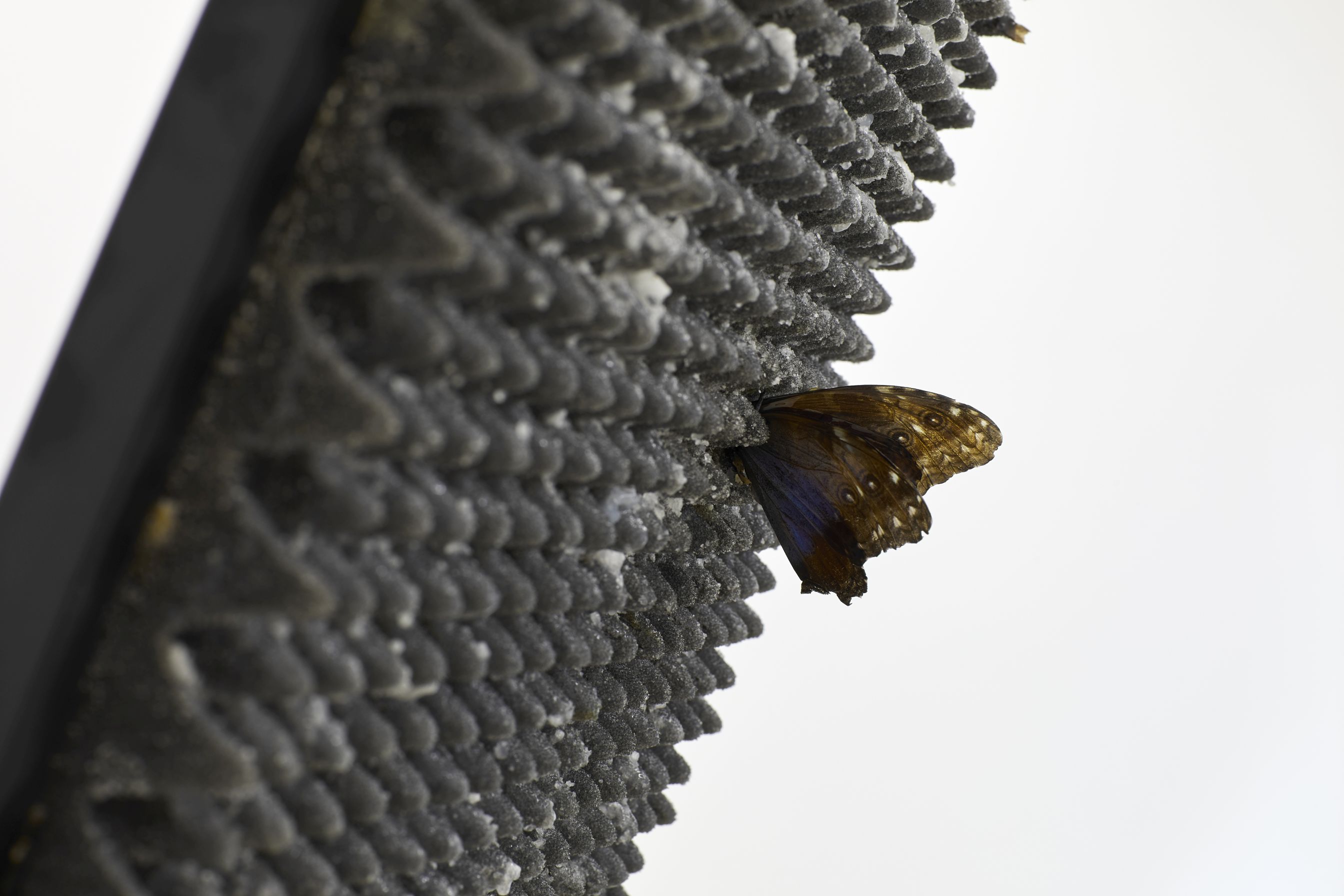Artists: Agata Ingarden and Agnieszka Polska
Title: The Future in Reverse
Venue: eastcontemporary Gallery, Milan
Text: Attilia Fattori Franchini
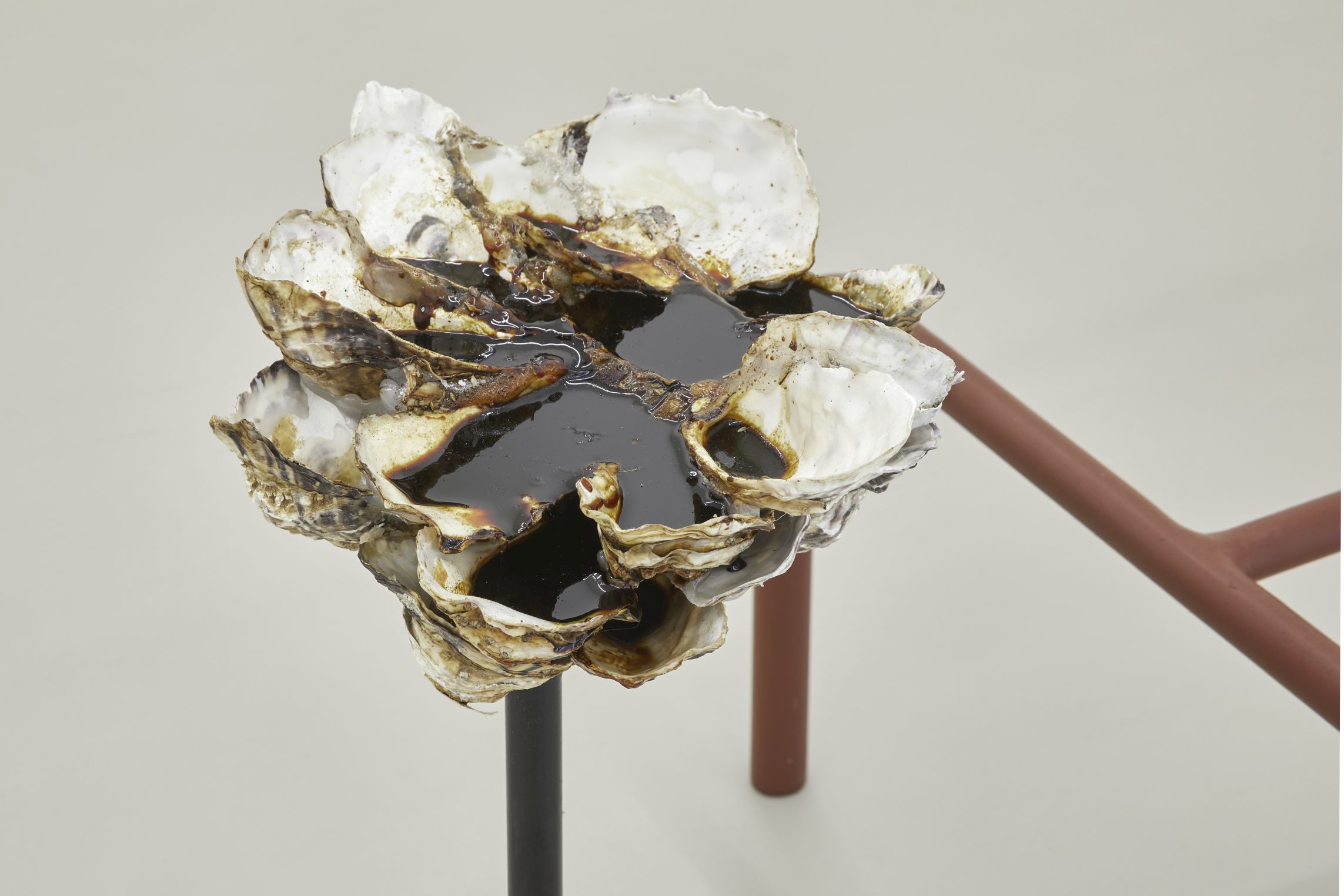
‘I am convinced that the future is lost somewhere in the dumps of the non-historical past; it is in yesterday’s newspapers, in the jejune advertisements of science-fiction movies, in the false mirror of our rejected dreams. Time turns metaphors into things, and stacks them up in cold rooms, or places them in the celestial playgrounds of the suburbs.’
Robert Smithson in A Tour of the Monuments of Passaic, New Jersey (1967)
We live in a dystopian present, where the great luring promise of ‘the future’ is dissolving, and we are being forced to adapt and change repeatedly in condensed timeframes. In such a dynamically changing world, our life is increasingly permeated by the feeling of instability and uncertainty about tomorrow – a sensation, which indeed constitutes our point of departure. Does the future exist? Perhaps it is nothing but the spirit of what has already been? Or maybe we are condemned to an eternal present? Human beings have always been seeking to analyse, understand and name their indefinite continued progress of existence, trying to
eventually liberate themselves from the notion of time, an act which would potentially allow them to move beyond it. Time, a fluid concept, whose nature was questioned and subjected to numerous interpretations across centuries, becomes the matrix of the exhibition The Future in Reverse holding together a diverse body of works by participating artists Agata Ingarden and Agnieszka Polska.
The Future in Reverse inaugurates the activity of eastcontemporary – a Milan-based new exhibition space dedicated to research, development and promotion of Central and East European contemporary art and culture through exhibitions, events, publications and partnerships. The exhibition is part of Odds Against Tomorrow, a curatorial endeavour committed to exploring the concept of future as a multi-layered narration about its possibilities and impossibilities. The project is conceived as a spatio-temporal form that
is shaped over time through thematic exhibitions and a series of meetings.
‘When the image is new, the world is new.’ Gaston Bachelard
Postmodernism taught us to mistrust the idea of time as linear.
It also instructed us to defy the progressive narratives propelled by Modernity, substituting unity with fragmentation, order with chaos. If the present reveals the incongruences of the past, how can we imagine a future?
The show The Future in Reverse, presents two Polish female artists Agata Ingarden and Agnieszka Polska, juxtaposing their work to offer an extended reflection on mythologies, metaphysics, linearity and time.
The practice of Agata Ingarden is rooted in storytelling, which manifests as writing, audio, films and sculptures – different forms of neural connections belonging to a centralized system. In her work technology and nature intersect creating new morphologies across media. As part of the exhibition, Ingarden presents a selection of three sculptures Lucy, The Mirror and The Solar Panel, and four videos The House, The Birth, The Eyes and The Ears, accompanied by 9 short stories (all 2018). A holiday house somewhere on an island in the Mediterranean Sea, functions as a starting point for magical and affective explorations. ‘The House is far away from any village and has its own atmosphere, making it a perfect place for an emergence of a microcosm’ 2 writes Ingarden in the incipit story. Each short-story introduces the viewer to a different aspect of the house. The imaginative geographical and metaphorical wonders of Italo Calvino’s Invisible Cities (1972) come to mind, interlacing historical and fictional facts, real and invented coordinates. The videos full of veiled symbolism and sculptural references, depict the house as a body in all its different parts. Eyes, to see the multiple alchemical transformations, ears to listen to the secrets that the house tells. The sculptural works function instead as receptive screens: absorbing and transmitting. Reminiscent of solar panels, surveillance radars or satellite antennas, they are turned towards each other, perhaps the viewer. The panels, held by red-lacquered metal poles, are filled with acoustic foam covered with butterflies crystallized in salt. The house is moved by nature, the news, technology, the surrounding sea waves, the weather, the cycle of
day and night, the wind, and a variety of distant voices it carries. All these little things make the house, its temporal layers of accumulation, the mixture of aspirational design and affordable comfort, constantly vibrate as an organ. The house is alive, a responsive system connecting with the natural world and its ancient myths. A sense of supernatural dramaturgy pervades, uncanny scenes and disorienting moments. Time loops and collapses, spiralling. We wonder if the House is the earth, a far-away planet or maybe us.
Agnieszka Polska’s film Future Days (2013), describes the future as a suspended space defined only through memory. Envisioning the past and present as in complete flux, Polska builds a surreal and oneiric narrative imagining a rendezvous of intergenerational death artists. This visionary underworld and its portrayed inhabitants lay the condition for a conceptual conversation about art, ideology, and the sublime subverting time structures. Set on the Swedish island of Gotland, we observe the protagonists Paul Thek, Jerzy Ludwinski, Włodzimierz Borowski, Lee Lozano, Charlotte Posenenske and Andrzej Szewczyk – each impersonated by an actor in a latex mask – drifting through various parts of the island. Their wander is not casual, whilst exploring the territory they come across pivotal artworks such as – Robert Smithson’s Partially Buried Woodshed (1970) and Richard Long’s A Line Made by Walking (1967) – the first famously known as an illustration of entropy and the second, one of the first examples of the intersection between natural landscape and the performative. Each of these encounters with fellow defunct artists’ artworks or the symbolic, eerie landscape, is followed by intellectual discussions exploring the notion of human desire. There is an uncanny clumsy sense in the film as these non-living artists are kind of zombies, vacuum eyes
and bumbling body movements, their past presence also revealed in their unnatural physical appearance. ‘Hold to the now, the here, through which all future plunges to the past’ advised James Joyce’s Ulysses in 1922 and we receive a similar monitus from this group of death artists endlessly understanding reality through past art movements and artwork.
What happens when there is no progress? No future movements or avant-guards? The Future in Reverse raises pertinent questions about the subverting power of creative thought and absence and how do we, the living, construct and activate past and future mythologies.
Attilia Fattori Franchini
